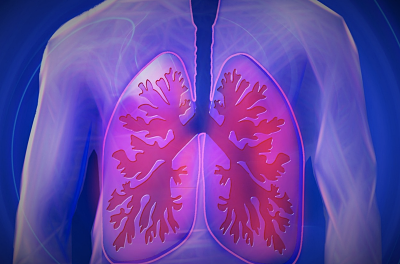
WHAT IS INTERSTITIAL LUNG DISEASE?
Interstitial lung disease, or ILD, is a term used to describe a group of lung disorders which tend to cause progressive scarring of the lung tissue. The interstitium is a thin network of tissue that supports the tiny air sacs in the lungs known as alveoli. The interstitium is so thin it is not normally seen on an x-ray or CT scan; however, patients with interstitial lung disease have a thickened interstitium which is evident in imaging.
The progressive nature of interstitial lung disease implies that the scarring in the lung tissue will eventually cause breathing difficulties. The scar tissue affects the performance of the lungs by impairing the ability to get enough oxygen into the bloodstream. The disease can occur when a small injury to your lungs triggers an abnormal healing response creating too much scar tissue around the alveoli.
TYPES OF INTERSTITIAL LUNG DISEASE
There are several types of interstitial lung disease including:
CAUSES OF ILD:
Anyone can be diagnosed with interstitial lung disease, but there are a few factors that increase your risk, such as:
– Age
– Autoimmune disease
– Genetics
– Smoking
– Gastroesophageal reflux disease or GERD
– Radiation treatments for cancer
Interstitial lung disease can be caused by long term exposure to harmful materials such as asbestos and other airborne toxins. The disease can also be triggered by autoimmune diseases such as rheumatoid arthritis. In most cases, the cause of the disease is unknown.
SYMPTOMS OF ILD:
The most common symptom of an ILD is shortness of breath. As the scar tissue forms and the disease progresses, shortness of breath may get worse over time. Other symptoms include:
– Dry cough
– Weight loss
If you are experiencing prolonged shortness of breath or a persistent dry cough, Pulmonary Associates of Richmond can evaluate your symptoms, perform any necessary tests and diagnose your condition. Once you have an accurate diagnosis, you can begin treatment to stabilize or slow the progression of the disease. Since interstitial lung disease is progressive, the treatments available are unable to stop the disease, but they can improve the quality of your life.
DIAGNOSING INTERSTITIAL LUNG DISEASE & TREATMENT![]()
There are several tests that can be performed to help make an accurate diagnosis. Some of the testing includes:
Chest X-ray – a chest x-ray is the first line of testing for most people presenting with symptoms of ILD. It is quick, non-invasive and can show evidence of a thickened interstitium
CT Scan – the CT scan offers a more detailed image of the lungs and can usually verify the presence of interstitial lung disease. A CT scan is helpful in making an accurate diagnosis
Lung Function Test – a lung function test is used to measure total lung capacity and will be repeated periodically if you have been diagnosed with interstitial lung disease. A lung function test provides good baseline data that helps to track the progression of the disease
Lung biopsy – a lung biopsy allows the doctor to analyze lung tissue that has been carefully removed and is helpful in determining the type of interstitial lung disease you have
The treatment prescribed to patients who have been diagnosed with ILD is tailored to the specific type and cause of ILD. These treatments include:
- Corticosteroid medications – steroids, usually combined with other medications, are used to reduce inflammation and suppress the immune system enough to slow and possibly stabilize the progression of the disease
- Antifibrotic medications also known as antifibrotic therapy is used in the treatment of idiopathic pulmonary fibrosis to slow the production of fibrous scar tissue. These medications can have significant side effects which the providers at Pulmonary Associates of Richmond will discuss with you
- Medications to reduce stomach acid – it is found that the majority of people with idiopathic pulmonary fibrosis also have gastroesophageal reflux disease, or GERD. Your doctor will recommend a medication that helps to reduce stomach acid
- Oxygen therapy – oxygen therapy is a supportive treatment that can help to improve the quality of your life. It makes breathing easier, reduces blood pressure on the right side of your heart, lessen complications from low blood oxygen levels and improves sleep and sense of well-being
- Pulmonary rehabilitation – pulmonary rehabilitation is also supportive therapy that helps patients to live a full and satisfying life. Pulmonary rehabilitation focuses on building endurance, efficient breathing techniques, emotional support and nutritional counseling
- Lung transplant surgery – lung transplant surgery is an option for patients with severe progression of the disease and who have not responded to other forms of treatment
- Clinical trials are used to test experimental drug treatments


